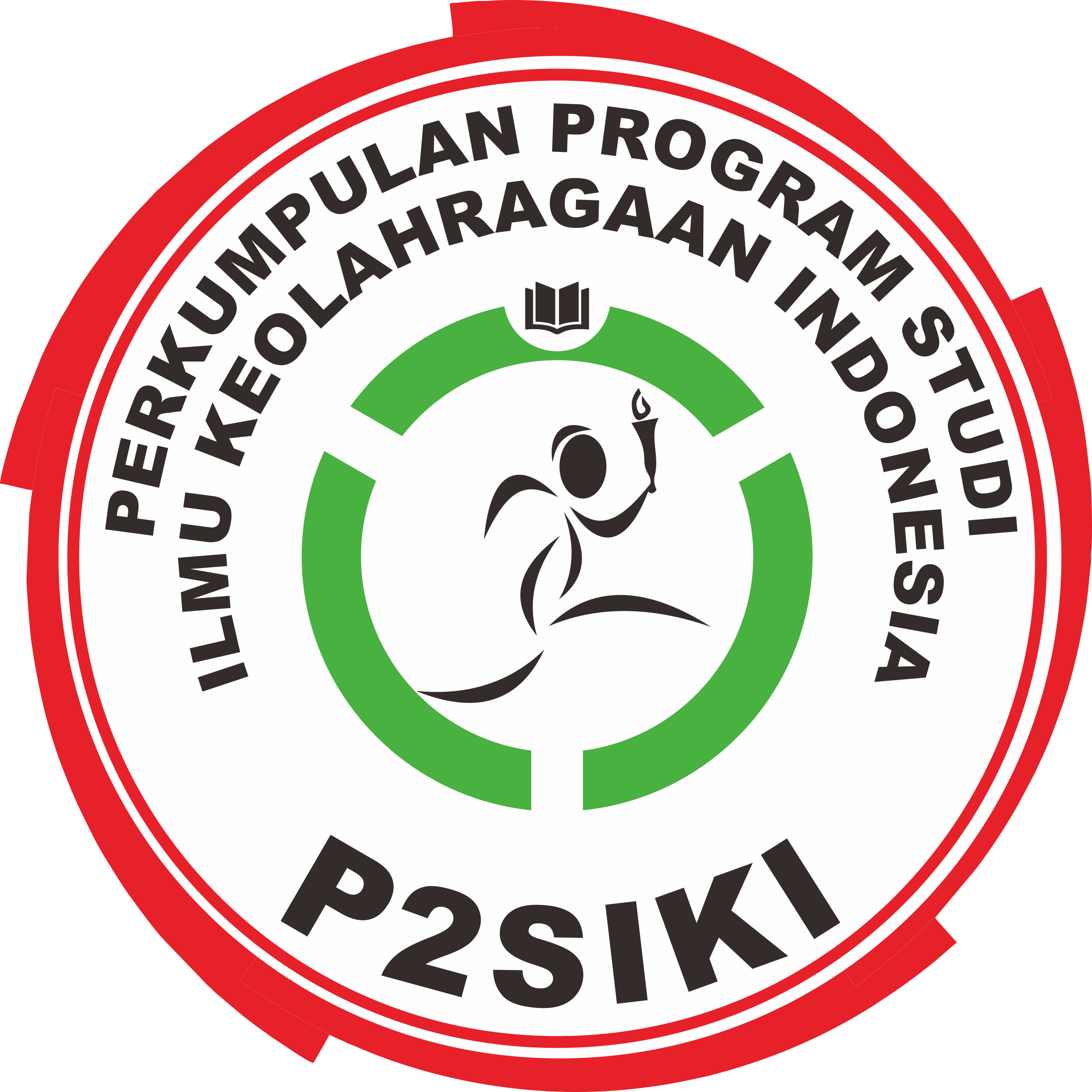Asam Laktat dan Aktivitas SOD Eritrosit pada Fase Pemulihan Setelah Latihan Submaksimal
(1) Fakultas Ilmu Keolahragaan, Universitas Negeri Surabaya. Mobile Phone: 08121662736
Abstract
Tujuan penelitian untuk membandingkan kadar asam laktat dan aktivitas SOD eritrosit pada fase setelah latihan submaksimal. Hasil menunjukkan bahwa rerata asam laktat awal 2,282 ± 0,555 mMol/L, asam laktat 5 menit setelah latihan 7,936  ± 1,125 mMol/L, asam laktat 60 menit setelah latihan 3,109± 0,501 mMol/L, aktivitas SOD eritrosit awal 70,727 % ± 11,889, aktivitas SOD eritrosit 5 menit setelah latihan 4,364 % ± 2,501, aktivitas SOD eritrosit 60 menit setelah latihan 10,000 % ± 2,828. Persentase kadar asam laktat darah 60 menit setelah latihan 85,099 % ± 11,515, persentase aktivitas SOD eritrosit 60 menit setelah latihan 8,177 % ± 5,132. Uji normalitas menunjukkan nilai p > 0,05. Uji ANOVA sama subyek menunjukkan  asam laktat sebelum dengan 5 menit setelah latihan nilai p sebesar 0,000 (p < 0,05) dan aktivitas SOD eritrosit sebelum latihan dengan 5 menit  setelah latihan nilai p sebesar 0,000 (p < 0,05). Asam laktat 5 menit dengan 60 menit setelah latihan nilai p sebesar 0,000 (p < 0,05), aktivitas SOD eritrosit 5 menit dengan 60 menit setelah latihan memiliki nilai p sebesar 0,001 (p < 0,05). Kesimpulan persentase aktivitas SOD eritrosit lebih kecil dari pada persentase kadar asam laktat darah 60 menit setelah latihan olahraga submaksimal.
Kata Kunci: kadar asam laktat darah; aktivitas SOD eritrosit; latihan submaksimal
Abstrast
The aims of study is to compare the levels of lactic acid and erythrocyte SOD activity in the phase after exercise submaximal. The results showed: the early lactic acid levels 2.282 ± 0.555 mMol / L, lactic acid level 5 minutes after exercise 7.936 ± 1.125 mMol / L, lactic acid levels 60 minutes after exercise 3.109 ± 0.501 mMol / L, activity initial erythrocyte SOD 11.889 ± 70.727%, erythrocyte SOD activity 5 minutes after the workout 4.364% ± 2.501, erythrocyte SOD activity 60 minutes after the workout 10.000% ± 2.828. Percentage of blood lactic acid levels 60 minutes after exercise 11.515 ± 85.099%, and the erythrocyte SOD activity 60 minutes after the workout 8.177% ± 5.132. Normality test p value > 0.05. ANOVA of the same subjects obtained by lactic acid levels before the 5 minutes after the workout has a p value of 0.000 (p <0.05) and erythrocyte SOD activity before exercise by 5 minutes after the workout has a p value of 0.000 (p <0.05). Lactic acid levels in 5 minutes with 60 minutes of exercise a p value of 0.000 (p <0.05) and erythrocyte SOD activity 5 minutes to 60 minutes after exercise has a p value of 0.001 (p<0.05). With the test of independent sample T test on the percentage decrease in blood lactic acid levels in erythrocyte SOD activity 60 minutes after exercise obtained p value of 0.000 (p <0.05).  Conclusion that the percentage of erythrocyte SOD activity is less than the percentage of blood lactic acid levels 60 minutes after exercise submaximal.
Keywords: lactic acid; erythrocyte SOD activity; exercise submaximal.
Full Text:
PDFReferences
Analitytical Fluka. 2004. 19160 SOD Determination Kit. [email protected], 1-3
Andiana, O. 2008. Pengaruh Latihan Interval Istirahat Aktif dan Istirahat Pasif Terhadap Derajat Stres Oksidatif. Tesis. Surabaya: Program Pascasarjana Universitas Airlangga Surabaya
Astrand, P.O. and Rodahl, K. 1986. Textbook of Work Physiology, McGraw-Hill Book Company New York. 412-413
Ahmaidi. 1996. Hubungan Kadar Asam Laktat dengan Proteinuria Pada Penderita Preklamsia. Tugas Akhir tidak diterbitkan. Malang: Fakultas Kedokteran Universitas Brawijaya
Aslan, R., Sekeroglu, M.R., Tarakcioglu, M., Bayiroglu, F. and Meral, I. 1998. Effect of Acute and Regular Exercise on Antioxidative Enzymes, Tissue Damage Markers and Membran Lipid Peroxidation of Erythrocytes in Sedentary Students. Journal of Medical Sciences, 28: 411-414
Basset, D.R., Hoeley, E.T. 2000. Limiting Factor For Maximum Oxygen Uptake and Determinant of Endurance Performance. Med and Sci in Sport and Exercise. 32: 70-84
Bompa, T.O. 1994. Theory and Methodology of Training: The Key to Athletic Performance . Kendall/Hunt Publishing Company, IOWA. USA. pp 2-3
Brooks, G.A., Fahey, T.D. 1984. Exercise Physiology Human Bioenergetics and Its Application. New York: Macmillan Publishing Company, pp 701-715
Cooper, C.E., Vollaard, N.B., Choueiri, T. & Wilson, M.T. 2002. Exercise, Free Radicals and Oxidative Stress. Biochem. Soc. Tras, 30: 280-285
Clarkson, Priscilla M. and Thompson, H.S. 2000. Antioxidants: what role do they play in physical activity and health?. American Journal of Clinical Nutrition, 72(2): 637S-646S
Deborah, A.W., Charles, A.B. 2006. Foundations of Physicial Education Exercise Science and Sport, Mc Graw-Hill International Edition
Elizabeth Quinn, 2008. Preventing Overtraining - When Less Is More (http://sportmedicine.about.com) diakses 15 April 2010
FKUI, Bagian Biokimia. 2001. Biokimia Eksperimen Laboratorium. Jakarta: Widya Medika
Fox, El., Bowers, R.W. and Foss, M.L. 1998. The Pysiological Basis of Physical Education and Athletics (4th Ed.). Philadelphia: Saunders College
Glesson, M.M., Blannik, A.K., Walsh, N.P., Pritchard, J.C. 1998. Effect of Exercise Induce Muscle Damage on Blood Lactate Respon to Incrremental Exercise In Human. Eur J Appl Physiology. 77(3): 292-295
Gollnick, P., Bayly, M.W., Hodgson, R.D. 1986. Exersice Intensity, Training Diet and Lactate Concentration in Muscle and Blood. Med and Sci Sport Exerc. 18 (3): 334-339
Goodwin, M.L. 2007. Blood Lactate Measurments and Analysis During Exercise : A Guide for Clinicians. J. of Diabetes Sci and Tech. 1 (4): 558-569
Gul, M., Atalay, M. and Hanninen, O. 2003. Endurance Training and Glutathione-Dependent Antioxidant Defense Mechanism In Heart of The Diabetic Rats. Journal of Sports Science and Medicine, 2: 53-61
Guyton, A.C. and John E.H. 2004. Text Book of Medicine Physiology. Tenth edition. Elsevier Saunder, 1600 John F, Kennedy Boulvard, Suite 1800. Philadelphia Pennsylvania 19103-2899
Halliwell, B. 1991. Reactive Oxygen Species in Living Systemsz: Sources, Biochemistry, and Role in Human Disease. The American Journal of Medicine. 91 (Suppl 3C): 1-2
Halliwell, B. and John M.C.G. 1999. Free Radicals in Biology and Medicine ( 3rded): Oxidative Stress, Adaptation, Damage, Repair and Death. Oxford Univercity Press. 106, 246, 411
Harjanto. 2003. Petanda Biologis dan Faktor yang Mempengaruhi Derajat Stres Oksidatif pada Latihan Aerobik Sesaat. Disertasi. Surabaya: Program Pascasarjana Universitas Airlangga Surabaya
Harjanto. 2003-a. Antioksidan Functions as A Network: Cooperation and Interdependece. Majalah Ilmu Faal Indonesia. 3(1): 40-46
Heyward, Vivian H. 1997. Advanced Fitness Assesment and Exercise Prescription (3th Ed.). USA: Human Kinetics
Indah F., Ellys. 2001. Pengaruh Rumput Laut (Euchema Spinosum) Terhadap Aktivitas Radikal Bebas Pada Hepar Tikus (Rattus Novergitus Strain Wistar) yang Mendapat Diet Kolesterol Tinggi. Tugas Akhir tidak diterbitkan. Malang: Fakultas Kedokteran Universitas Brawijaya. : 40
Janssen Peter G.J.M., 1987. Training Lactate Pulse Rate. Oule Finland: Polar Electro Oy, pp 26, 51-53, 57-58
Ji, Li, Li. 1996. Exercise, Oxidative Stress, and Antioksidants. The American Journal of Sports Medicine, 24(6): 20S-24S
Jenkins, R.R., Krause, K. and Schofield, L.S. 1993. Influence of Exercise on Clearance of Oxidant Stres and Activation of Caspases in Rat Thymocytes. Medical Science of Sports Exercise, 25: 213-217
Jewett, S.L., L.J. Eddy and P. Hochstein. 1989. Is The Autoxidation of Catecholamines Involved In Ischemia-Reperfusion Injury? Free Radical Biologycal Medicine, 6: 185-188
Khataria, Ratnaeni, Yuga. 2001. Pengaruh Pemberian Dekok dan Instan Temulawak (Curcuma Xanthorriza Roxb) Terhadap Kadar Malondialdehyde (MDA) Pada Serum, Paru, dan Hepar Tikus Wistar yang Dipapar Asap Rokok Kretek Subakut. Tugas Akhir tidak diterbitkan. Malang: Fakultas Kedokteran Universitas Brawijaya. 25-28
Kraemer, William J. 2003. Strength Training Basics. The Physician and Sportsmedicine, 31(8). (Online), (http://www.physsportsmed.com/issues/2003/0803/kraemer.htm, diakses 17 April 2005)
Kumaidah E. 2002. Pengaruh Pemulihan Aktif Dengan Bersepeda dan Naik Turun Bangku Terhadap Penurunan Kadar asam Laktat darah. Tesis. Surabaya: Program Pascasarjana Universitas Airlangga
Leaf D.A., Kleinman M.T., Hamilton M., Deitrick R.W. 1991. The Exercise-Induced Oxidative Stress Paradox: The Effects of Physical Exercise Training. Am Med Sci. 317: 295 –300
Leeuwenburgh, C. & Heinecke, J.W. 2001. Oxidative Stress and Antioxidants in Exercise. Journal of Medicinal Chemistry, 8 (7): 829-838
Marks, A.D., Marks, D.B. and Smith, C.M. 1996. Biokimia Kedokteran Dasar: Sebuah Pendekatan Klinis. Terjemahan oleh Brahm U. Pendit. 2000. Jakarta: EGC. 329
Mayes, P.A. 1985. Harper’s Biochemistry, 25th edition. Edited by: Murray RK, Graner DK, Mayes PA, Rodwell VW. New York : McGraw-Hill, pp 149-159, 173,177
McArdle, W.D., Katch, F.I. and Katch, V.L. 2001. Exercise Physiology: Energy, Nutrition, and Human Performance. Philadelphia etc: Lippincott Williams and Wilkins. 54
McBride, J.M. and Kraemer, W.J. 1999. Free Radicals, Exercise, and Antioxidants. Journal of Strength and Conditioning Research, 13(2): 175-183
Mercier, J., Mercier, B., Prefaut, C. 1991. Blood Lactate During the Force Velocity Exercise Test. Int J Sport Med. 12(91): 17-20
Murry, R.K., 1996. Harper’s Biochemistry Appleton and Lange. pp 241-316
Niess, A.M., H.H. Dickhuth, H. Northoff and E. Fehrenbach. 1999. Free Radicals and Oxidative Stress in Exercise Immunological Aspects. Exercise Immunology Review, 5: 22-56
Parks, D.A. and Granger, D.N. 1986. Xanthine Oxidase: Biochemistry, Distribution and Physiology. Acta Physiol Scand Suppl, 548: 87-99
Patellongi, Ilhamjaya and Badriah, Laelatul, Dewi. 2003. Pengaruh Intensitas Latihan Fisik Terhadap Kerusakan Jaringan. Jurnal IPTEK Olahraga, 5(1): 1-19
Program Pascasarjana Unair. 2004. Pedoman Penulisan Tesis dan Desertasi. Surabaya: Airlangga University Press. Surabaya
Sadoso. 1984. Kesehatan Olahraga. Jakarta: PT Grafidian Jaya, 65
Sardjuno, Sadoso, Sumo. 1983. Manfaat dan Cara Olahraga Aerobik pada Orang Sehat dan Penderita Jantung. Procceding Simposium penyakit Kardiovaskuler dan Kardiologi Pencegahan. Jakarta, IKKI: 131-143
Sen, Chandan K. 1995. Oxidants and Antioxidants in Exercise. Journal of Applied Physiology, 79(3): 675-686
Simamora, Adeline. 2003. Efek Tokoferol Pada Peroksida Lipid. Majalah Kedokteran Meditek, 11(28): 44-55
Soekarman. 1991. Energi dan Sistem Energi Predomina Pada Olahraga. Jakarta: KONI.
Sugiharto. 2000. Pembentukan Radikal Bebas Oksigen Dalam Aktivitas Fisik. Lab Jurnal Ilmu Keolahragaan dan Pendidikan Jasmani, 10(1): 22-32
Sugiharto. 2003. Adaptasi Fisiologis Tubuh Terhadap Dosis Latihan Fisik. Makalah disajikan dalam pelatihan senam aerobik. Jurnal Laboratorium Ilmu keolahragaan. Malang: Universitas Negeri Malang
Sukadiyanto. 2005. Pengantar Teori dan Metodologi Melatih Fisik. Yogyakarta: Pendidikan Kepelatihan Olahraga Fakultas Ilmu Keolahragaan Universitas Negeri Yogyakarta.: 30
Supriadi. 2000. Pengaruh Latihan Aerobik dan Anaerobik Terhadap Luas Penampang Serabut Otot Merah (Slow Twitch) dan Otot Putih (Fast Twitch) Pada Tikus Wistar. Tesis tidak diterbitkan. Surabaya: Program Pasca Sarjana UNAIR
Sjodin, Bertil., Westing, Hellsten, Ylva. and Apple, Fred S. 1990. Biochemical Mechanisms for Oxigen Free Radical Formation During Exercise. Sports Medicine, 10(4): 236-254
Hardjasasmita, Pantjita. 1992. Ikhtisar Biokimia Dasar A. Jakarta: Balai Penerbit Fakultas Kedokteran Universitas Indonesia
Harsono. 1997. Prinsip-Prinsip Latihan dan Kondisi Fisik. Jakarta: PIO KONI Pusat
Howley, Edward T. and Franks, Don B. 1997. Health Fitness Instructur’s Handbook (3th Ed.). USA: Human Kinetics
Vaananen, Ilkka. 2004. Physiological Responses And Mood States After Daily Repeated Prolonged Exercise. Journal of Sports Science and Medicine, 3(6): 1-43
Venom. 2007. Active Recovery – A Three Fold Breakdwn. [email protected]
Wicaksono, Himawan. 2001. Efek Pemberian Kombinasi Klorokuin dan Asam Askorbat Terhadap Aktivitas Radikal Bebas Jaringan Hepar, dan Lien Mencit Balb/c yang Diinfeksi Plasmodium Berghei. Tugas Akhir tidak diterbitkan. Malang: Fakultas Kedokteran Universitas Brawijaya.
Widiyanto. 2002. Efek Pemberian Dekok Meniran (Phyllanthus Niruri Linn) Terhadap Kadar MDA Hepar Tikus (Rattus Norvegicus Strain Wistar) Yang Diinduksi Karbon Tetraklorida (CCl4). Tugas Akhir tidak diterbitkan. Malang: Fakultas Kedokteran Universitas Brawijaya
Widodo J.P. Poernomo H. Machfud M.H. 1993. Metode Penelitian dan Statistik Terapan. Surabaya: Airlangga University Press, hal 57-58
Wirahadikusumah, M. 1985. Biokimia: Metabolisme Energi, Karbohidrat dan Lipid. Bandung: Penerbit ITB Bandung
Willmore, J.H. and Costill, D.L. 2008. Physiology Of Sport and Exercise. USA: Human Kinetics, pp 216-236
Wulandari, N. 2001. Pengaruh Latihan Dengan Treadmill Terhadap Kontraktilitas Otot Jantung Tikus (Rattus Norvegicus) Pada Perlakuan Iskemia Reperfusi dengan Preparasi Langendorf. Tesis tidak diterbitkan. Malang: Fakultas Kedokteran Universitas Brawijaya
Yalcin, O., Melek B.K., Umit K.S and Oguz K.B., 2000. Effect of swimming Exercise on Red Blood Cell Rheology in Trained and Untrained Rats. J. Apply Physiol. 88 (6): 2074-2080 (Online), (http://www.yourtotalhealth.ivillage.com/home, diakses 9 desember 2010)
Yunus, M. 2000. Pengaruh Pemberian Vitamin C Terhadap Kerusakan Membran Sel Eritrosit Tikus Wistar Yang Mendapat Latihan Anaerobik. Usulan Penelitian tidak diterbitkan. Surabaya: Program Pasca Sarjana UNAIR
Zainuddin, M. 2000. Metodologi Penelitian. Surabaya: Pasca Sarjana Unair
Refbacks
- There are currently no refbacks.
Published by:
Department of Sport Science, Universitas Negeri Semarang
Gd. F1 Lt. 1 FIK-UNNES, Jalan Raya Sekaran Gunungpati Semarang Indonesia 50229, Telp/Fax: (024) 8508007
This work is licensed under a Creative Commons Attribution 4.0 International License.




